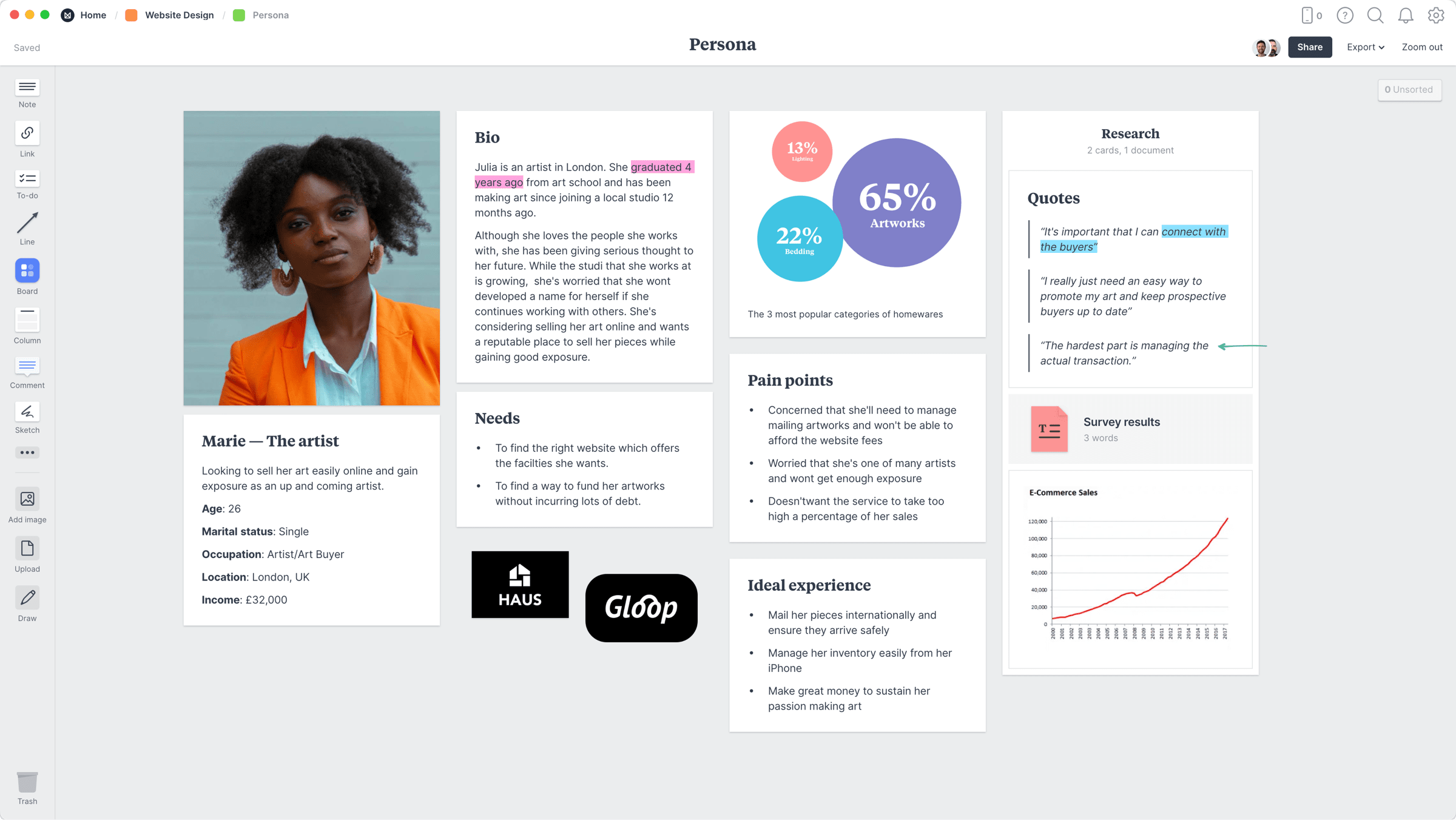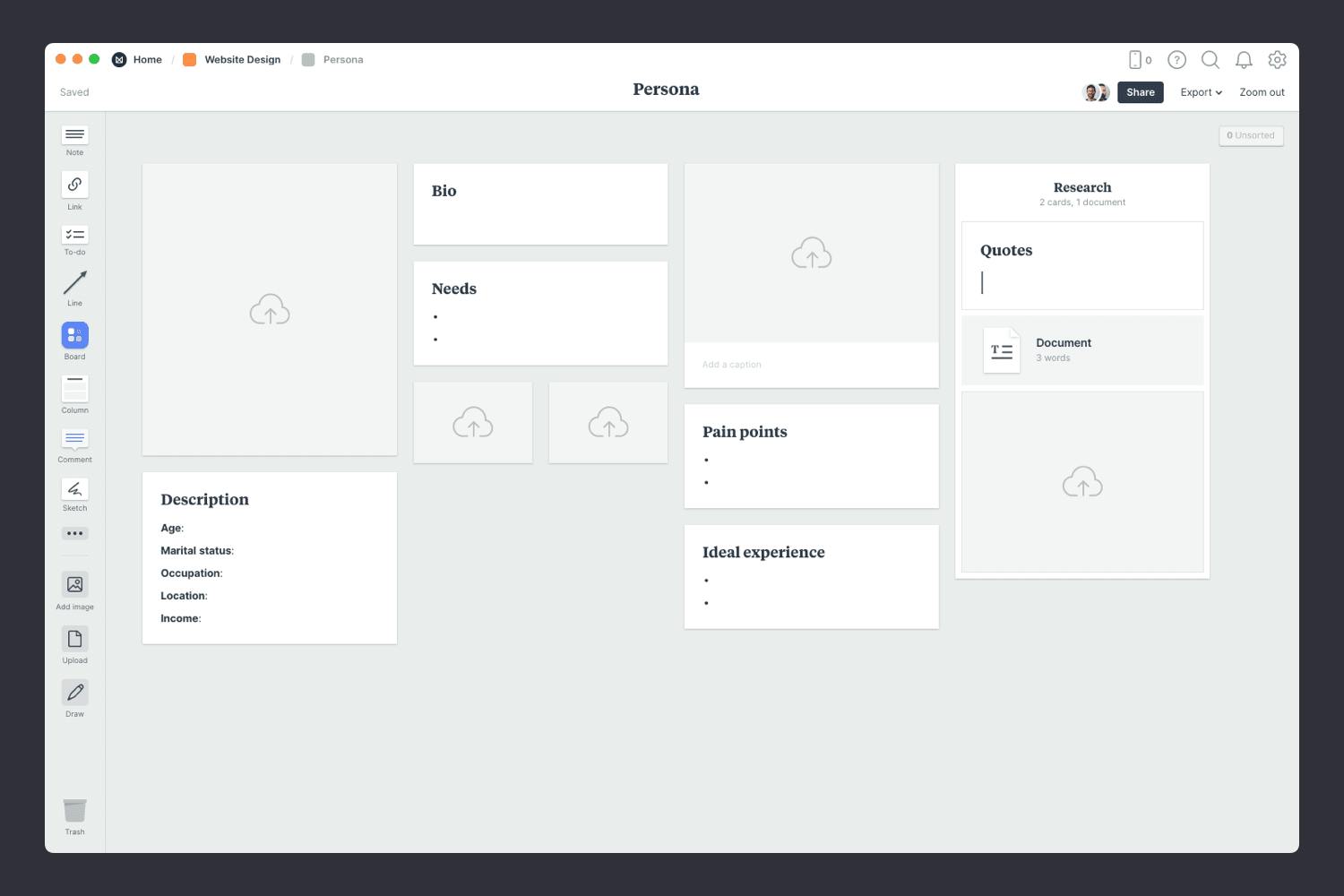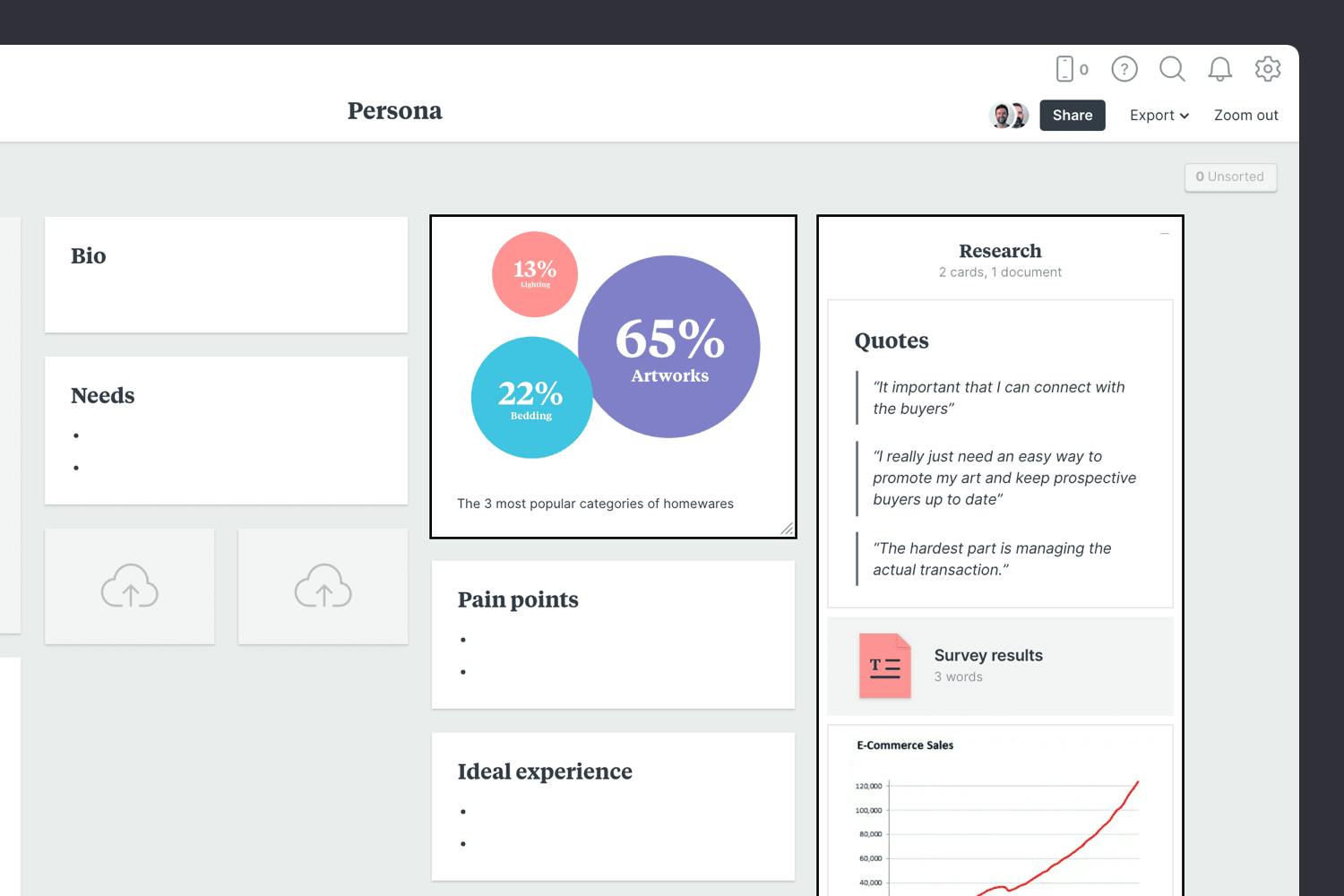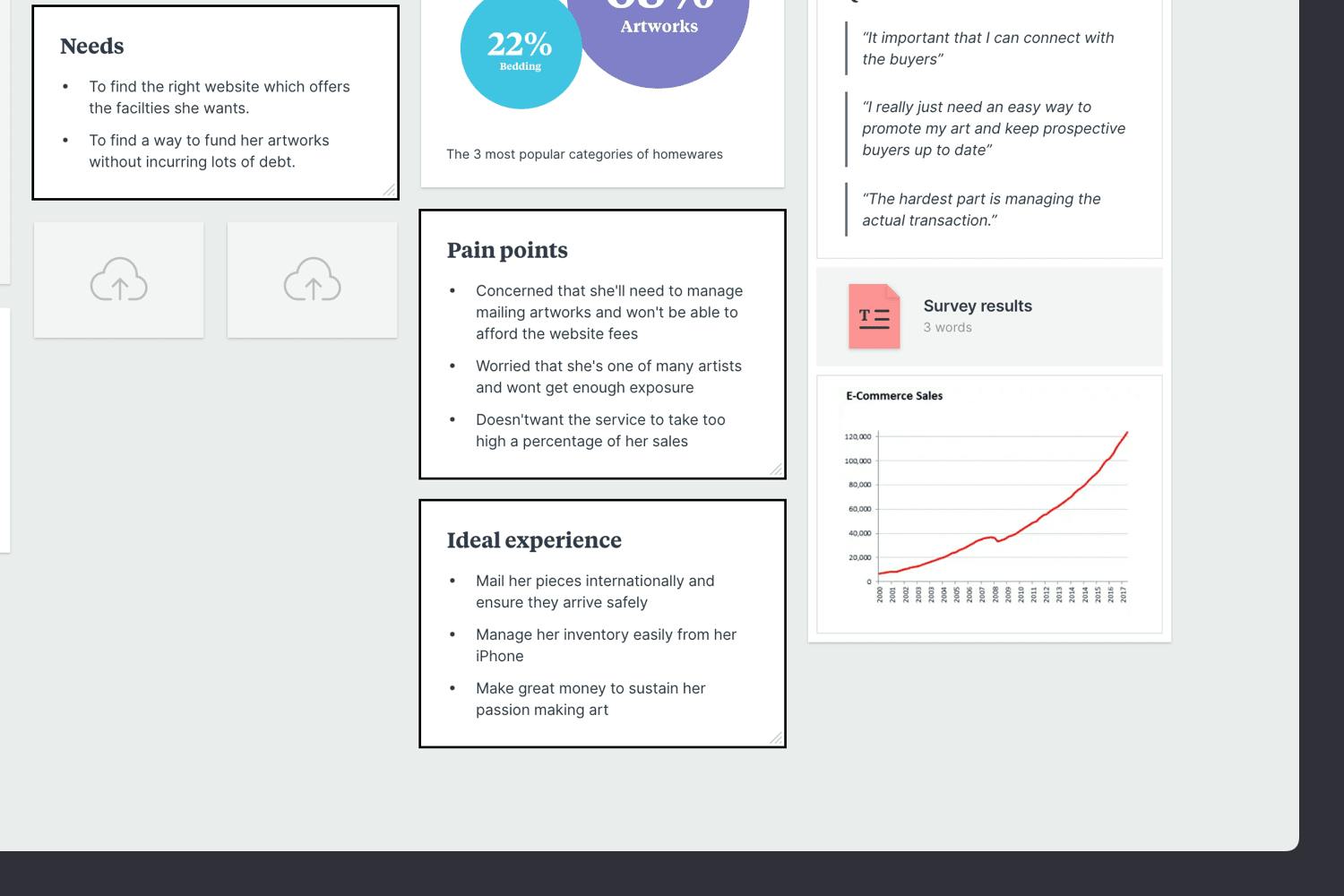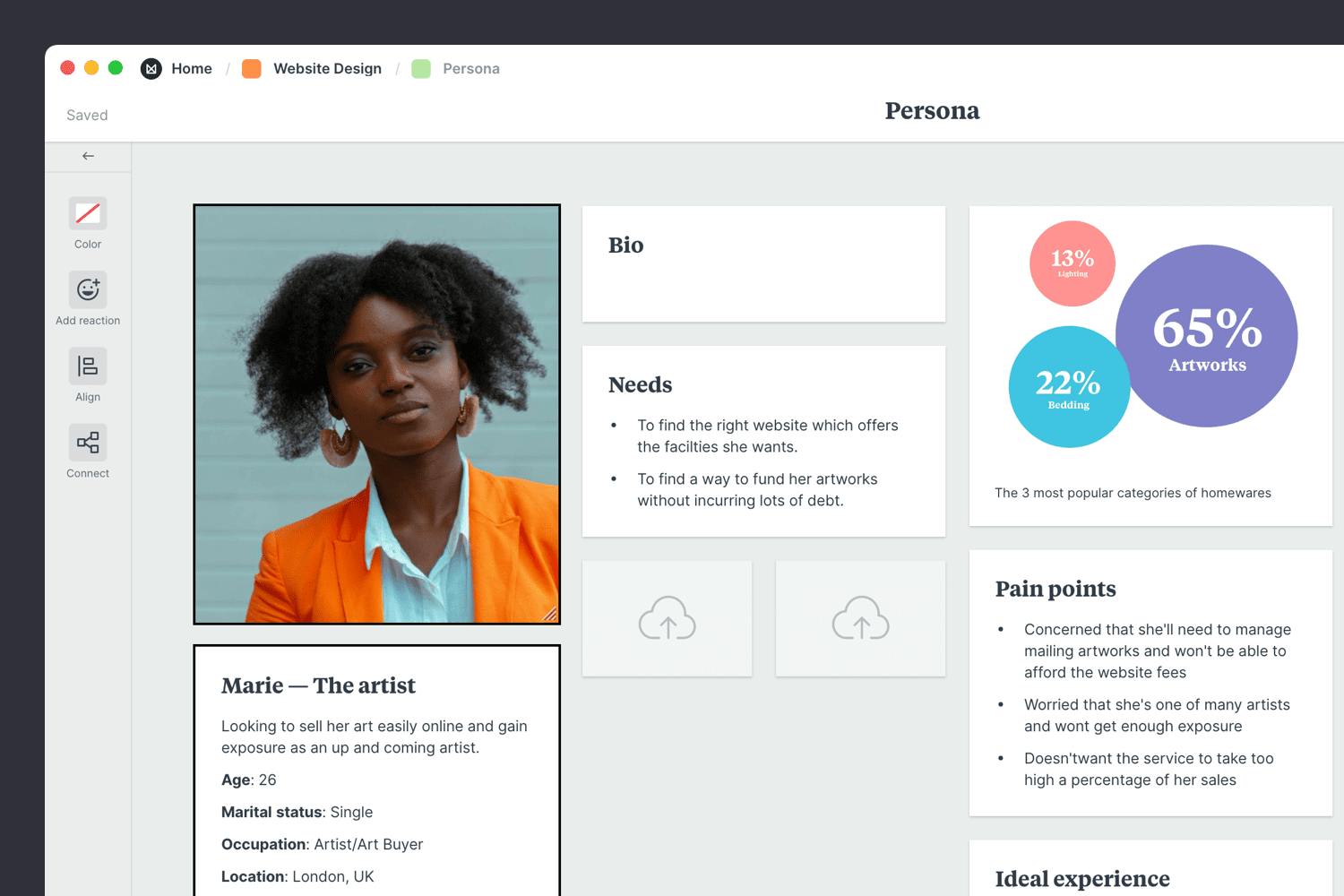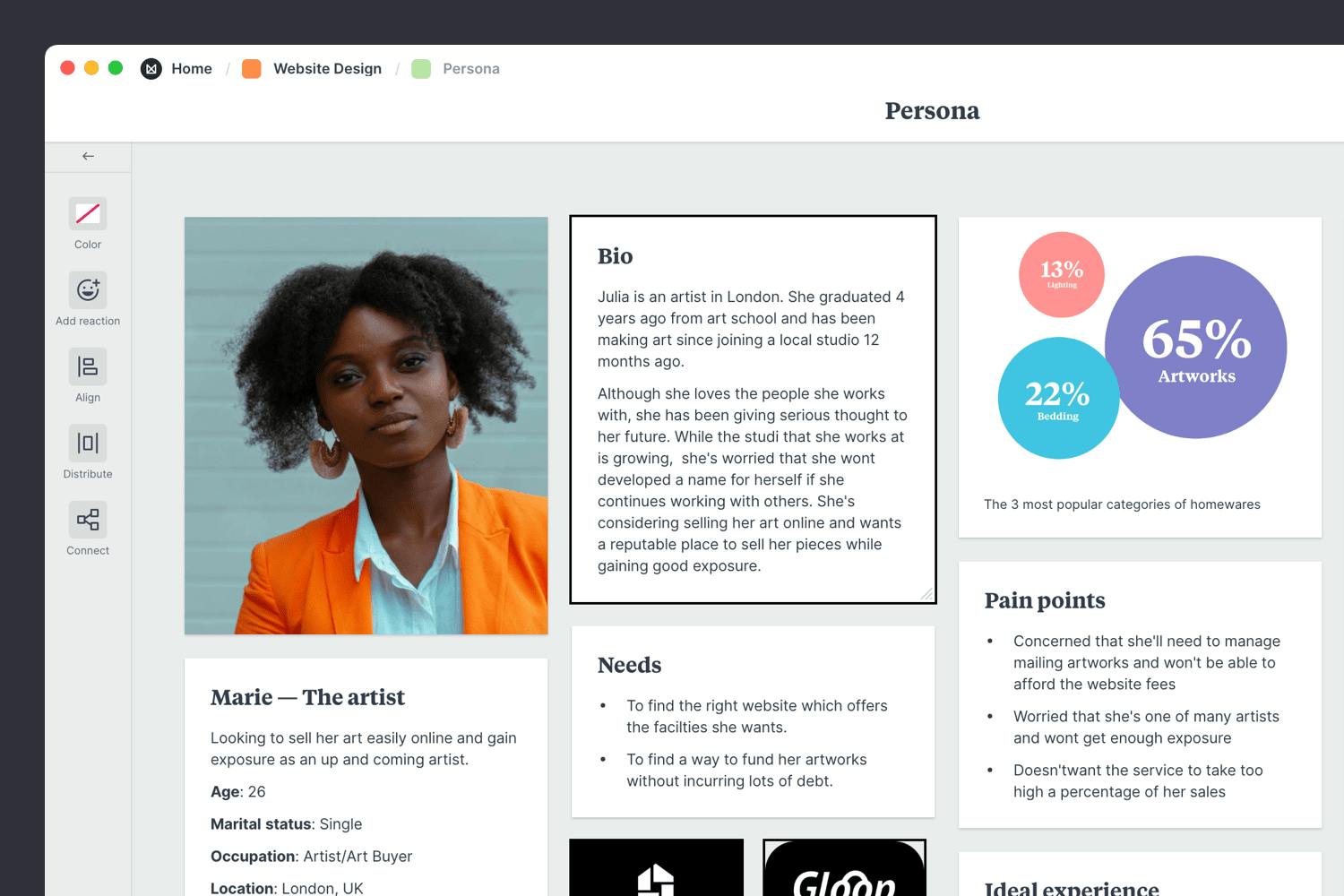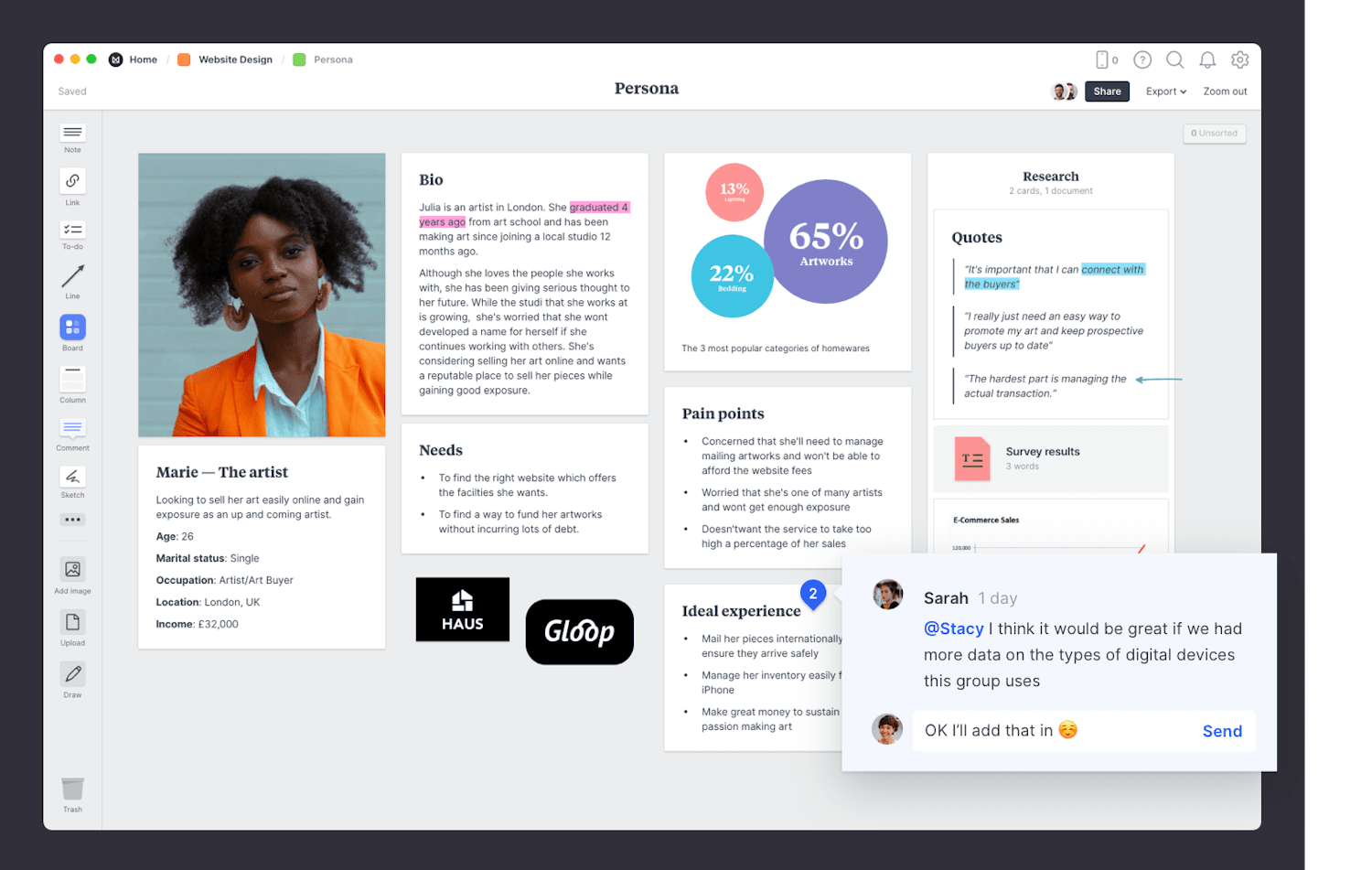Before you start designing a new product or service, it's crucial to figure out who's going to be using it.
Building user personas helps your design team to understand the people they're designing for, and ensures that everyone understands the user's goals, frustrations and motivations.
It's important to build out your persona template with real-world data and research. You want to be confident that these people actually exist and aren't just hypothetical. Rather than start from a blank canvas, we've prepared a template to get you started. It's pre-populated with an example persona to give you an idea of what's required.
